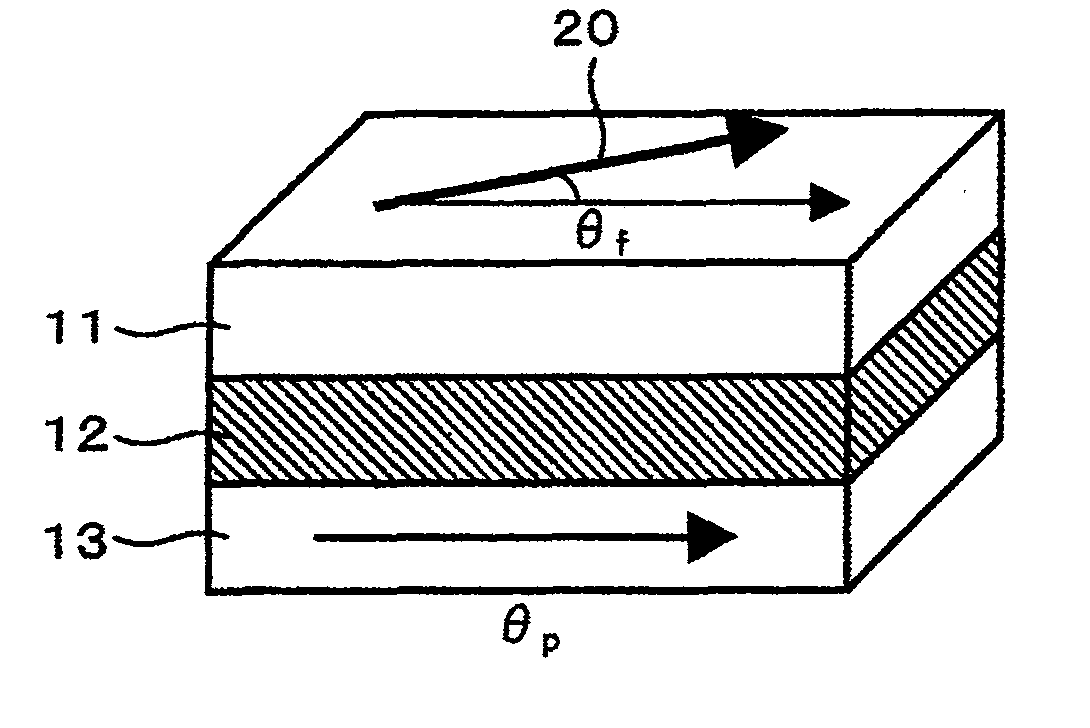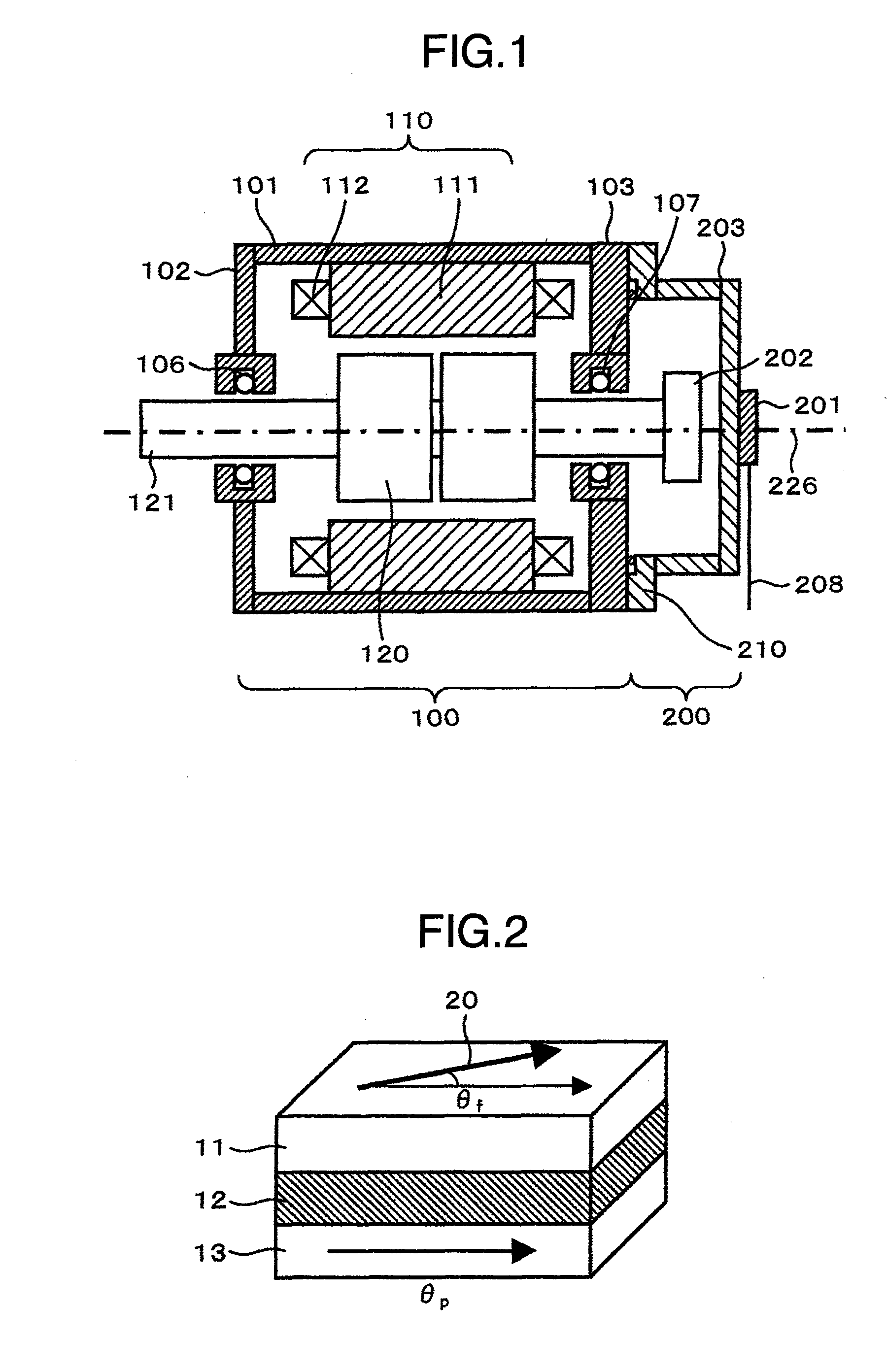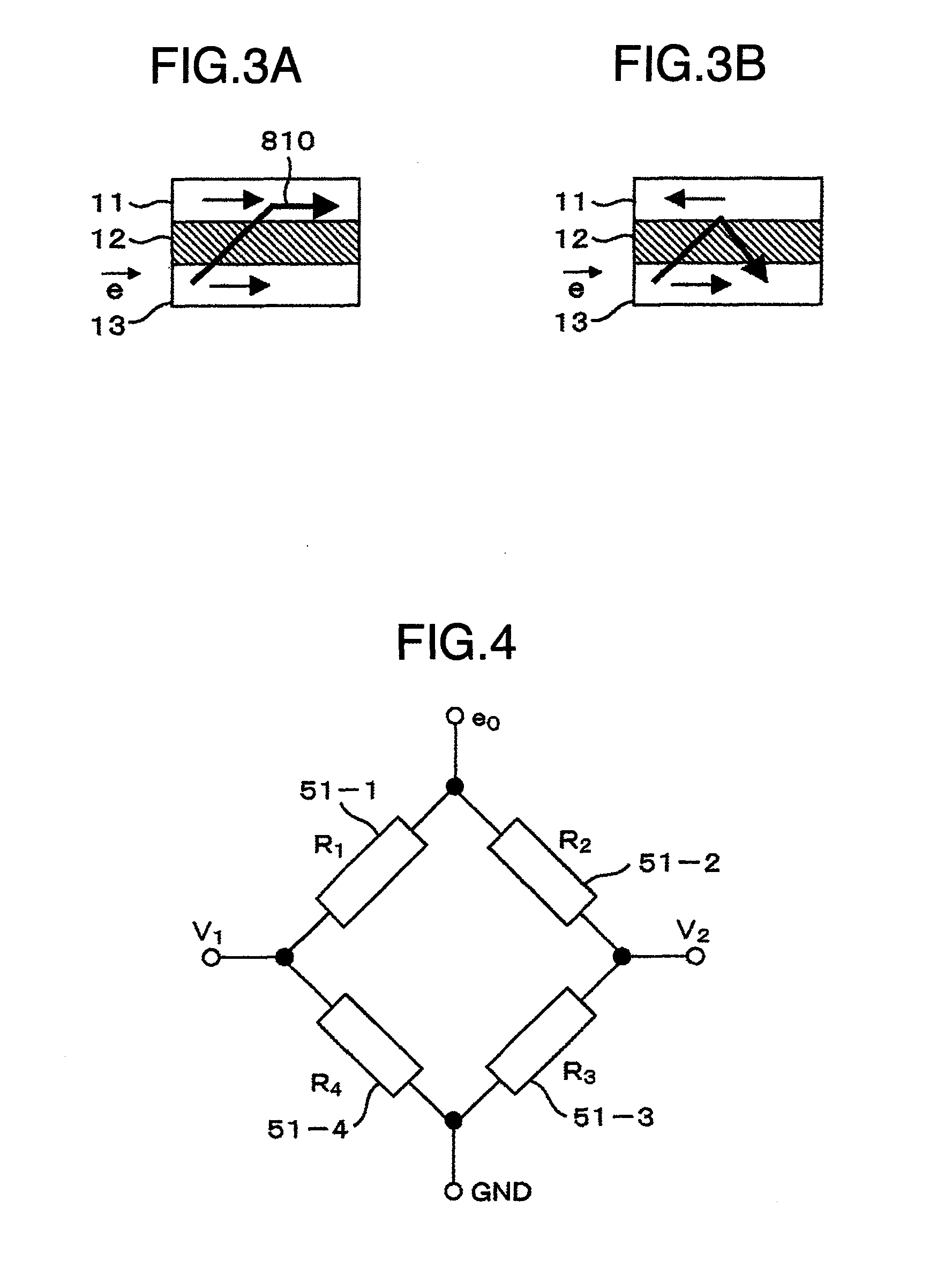Rotational Angle-Measurement Apparatus and Rotational Speed-Measurement Apparatus
a measurement apparatus and rotational angle technology, applied in the direction of instruments, galvano-magnetic devices, magnetic field measurement using galvano-magnetic devices, etc., can solve the problems of difficult correction of new apparatus, difficult in effect replacement of rotational angle measurement apparatus, and difficult mechanical alignment of magnetic sensors, etc., to achieve enhanced reliability and high accuracy
- Summary
- Abstract
- Description
- Claims
- Application Information
AI Technical Summary
Benefits of technology
Problems solved by technology
Method used
Image
Examples
first embodiment
[0078]This invention will now be described in detail below in reference to the attached drawings which show embodiments of this invention. First, a magnetic field detection apparatus according to this invention is exemplified as a magnetic field detection apparatus composed of giant magneto-resistance (GMR) elements.
[0079]FIG. 5 shows a first embodiment of a rotational angle-measurement apparatus according to this invention.
[0080]FIG. 5 is a cross-sectional view of a rotational angle-measurement apparatus as the first embodiment of this invention. This embodiment comprises a motor unit 100 and a rotational angle-measurement unit 200.
[0081]The motor unit 100 comprises a stator 110 consisting mainly of plural fixed magnetic poles and a rotor 120 consisting mainly of plural rotatable magnetic poles. In this motor unit 100, rotational torque is generated through magnetic interaction between the plural fixed magnetic poles and the plural rotatable magnetic poles being rotating. The stato...
second embodiment
[0205]this invention will be described in reference to FIGS. 26 and 27. This embodiment is concerned with a method for improving the temperature characteristic of the magnetic sensor 201 to a great extent.
[0206]Rotational angle sensors have been suffering from a problem that temperature change causes deterioration in measurement accuracy. That is the problem of poor temperature characteristic. According to this embodiment, the temperature characteristic of the magnetic sensor 201 is improved by improving the magnetic field angle-measurement method employed in the magnetic sensor 201.
[0207]The cause for the deterioration of the temperature characteristic in the magneto-resistance element is due to the superposition of offset voltages upon the output signals of the sensor element unit 301 incorporated in the magnetic sensor 201. This point is described in detail below. Since the GMR coefficient G / R in the expression (6) changes with temperature, the value of ΔVc changes with the chang...
third embodiment
[0261]FIG. 29 diagrammatically shows the waveforms of excitation voltages and detecting timing, used in this embodiment, and corresponds to FIG. 27 which is associated with this invention. The positive-polarity pulse 621 for the COS bridge and the positive-polarity pulse 622 for the SIN bridge are applied sequentially with a certain time shift. The negative-polarity pulse 612 is applied to the g terminal.
[0262]As a result of this shifted application of pulses, the signal voltage ΔVc for the COS bridge and the signal voltage ΔVs for the SIN bridge change as shown in FIG. 29. The zero point signal Vz is measured at time t0. Then, the signals for the COS bridge and SIN bridge are obtained at times t1 and t2, respectively.
[0263]In this way, since the signal is measured under the condition that the optimal excitation voltages Δe are applied to the COS and SIN bridges, respectively, then the offset component, that may be otherwise contained in the signal voltage, can be eliminated. Accord...
PUM
 Login to View More
Login to View More Abstract
Description
Claims
Application Information
 Login to View More
Login to View More - R&D
- Intellectual Property
- Life Sciences
- Materials
- Tech Scout
- Unparalleled Data Quality
- Higher Quality Content
- 60% Fewer Hallucinations
Browse by: Latest US Patents, China's latest patents, Technical Efficacy Thesaurus, Application Domain, Technology Topic, Popular Technical Reports.
© 2025 PatSnap. All rights reserved.Legal|Privacy policy|Modern Slavery Act Transparency Statement|Sitemap|About US| Contact US: help@patsnap.com



